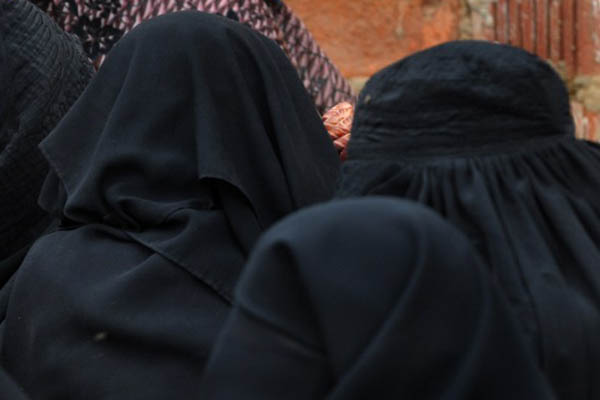
File Photo. Asif Hassan—AFP
In September 2022, 22-year-old Iranian woman Mahsa Amini died in a hospital in Tehran after being arrested and beaten by Iran’s morality police for violating the dress code. She reportedly spent two-and-a-half days in a coma prior to her death, with the torture triggering months of protests that are still ongoing. In neighboring Afghanistan, the Taliban rulers have banned women from a majority of public spaces, including educational institutions and the workplace. In a recent notification, Kabul’s economy ministry directed “all female employees who are working in their respective departments [to] stop their work until further notice.” Tragically, such edicts are often justified under the garb of “Islamic values.”
In Iran, physical violence against women starts at home and extends into society, in violation of fundamental human rights. Prior to its transformation into a male-dominated country after the 1979 Revolution, Tehran did not impose any dress code on women, leaving them free to opt for or against the veil. Within weeks of the revolution, however, the Islamic hijab became mandatory. Most women, especially women of the younger generation, rejected this but faced public backlash when they protested, being attacked by vigilantes who faced no resistance from police. Authorities also revoked a hard-won personal status law, allowing men to unilaterally divorce their wives, notifying them of the decision by mail. During the Iran-Iraq War, late president Ali Akbar Rafsanjani even urged women to “patriotically” allow their husbands marry war widows. In the years since, little has been done to correct women’s treatment as second-class citizens in Iran.
A similarly oppressive situation has played out in Afghanistan following the Taliban’s return to power last year. In addition to the mandatory niqab, women have been banned from public parks and forbidden from traveling outside the home without a male guardian. Facing the darkness of both exclusion and isolation, Afghan women have also been banned from higher education, leaving little possibility of furthering educational goals or intellectual growth. The situation is worse in rural areas, where early marriage; exclusion from school; domestic violence; lack of knowledge of legal and social rights; lack of access to sanitation, hygiene and water are among dozens of challenges facing women.
The culture of male-domination promoted by the clerical regimes in Afghanistan and Iran is reinforced in villages by a patriarchal management of culture that forbids women’s social participation. In “democratic” Pakistan, conditions are a little better despite its “ideology,” wrongly practiced in some areas. This unevenness of conduct gives rise to many ironies, one of which is the example of Benazir Bhutto, the first woman prime minister of an Islamic state, who was assassinated by elements wedded to the same shady principles as those handing down their cruel edicts in Iran and Afghanistan.
